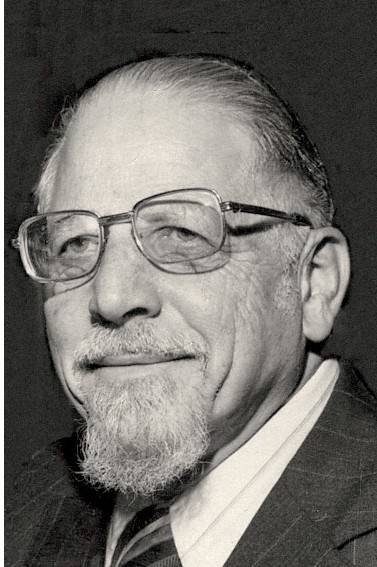(Translated from Rabbi Wohlgemuth’s Hebrew original text.)
Dear students
“The Anshei Knesset HaGedolah (Men of the Great Assembly) established for Bnei Yisrael blessings, prayers, Kedushot, and Havdalot.”
There are many discussions in the Talmud in which the Sages explain the concepts of prayer. Much of their discussions appear in Masechet Berachot, but a large portion are also scattered throughout other tractates as well.
This is the third edition of my Sefer Mekorot — the source book for my Beurei HaTefillah classes. As before, here we have reproduced a number of pages from various tractates. We have also added several pages of Halachot from the Mishneh Torah of the Rambam.[1] My students at Yeshivat Rambam can find within this book, without great effort, many Talmudic sugyot[2] to enlighten their eyes with a deeper understanding of the Service of the Heart. With it, they can study the historical background, the Halachic philosophy and the order of prayers for week days, Shabatot, and holidays.
We hope later, after our students graduate — this small book will also awaken the desire to set aside time to further their learning of Tefillot from the Rishonim[3], from the Poskim[4], and by using commentaries on the Siddur to understand the development of the structure, ideas, laws, and customs of Tefillah — discussions that deal with the Service of the Heart. Certainly there is added importance to knowing the original sources about Tefillah in the Talmud.[5] As the Sages said, “Letters make one wise.” [6]
Below are lists of Talmud pages ordered by (1) Tefillah topic and (2) According to tractate.
May it be in the coming years, that this book should bring the hearts of our students closer to their Father in Heaven.
Rabbi Isaiah Wohlgemuth
Tamuz 5741/ July 1981
LIST OF RABBI WOHLGEMUTH’S TALMUD SOURCE PAGES BY SUBJECT
1. Preliminary Blessings
Berachot 60b
Menachot 43b
2. Blessings on the Torah
Berachot 11a
3. Learning Torah before Tefillah and Pesukei D’Zimrah
Kiddushin 30a
Shabbat 118b
4. The Recitation of Shema and its Blessings
Berachot 11a 11b 12a 13b 14b 15b 61b
Pesachim 56a
Sotah 32a 32b
5. Tefillah
Berachot 4b 26b 30a 31a 33a 16b 17a
Megillah 17b 18a
Sotah 33a 40a
Shabbat 24a 24b
6. Tachanun
Megillah 22b
Bava Metzia 59b
7. Torah Reading on Mondays and Thursdays
Bava Kama 82a
8. Birkat HaGomel
Berachot 54b
9. Kaddish
Berachot 3a
Shabbat 119b
10. The Daily Song
Rosh Hashanah 31a
11. The Priestly Blessing
Sotah 37b 38a 38b 39a 39b 40a
Berachot 55b
12. Dvar Shebikedusha (Sanctification of Hashem's Name)
Megillah 23b
13. Hallel
Arakhin 10a 10b
Sukkah 38a 38b
Taanit 28b
Pesachim 117a 117b 118a 119a 119b
Berachot 14a
14. Kiddush Levana
Sanhedrin 42a
15. Kabbalat Shabbat and Kiddush
Shabbat 119a 119b 24b
Pesachim 114a
Berachot 20b 33b
Pesachim 103b 104a (Havdalah)
16. Rosh Hashanah
Rosh Hashanah 17b 32a 32b 33b
Taanit 25b
Berachot 12b (10 days of Repentance)
17. Confession
Yoma 87b
18. Netillat Lulav
Sukkah 37b
19. Haggadah of Pesach
Pesachim 117b 118a 114a 116a 116b
20. Tefillin
Menachot 34a 34b 35a 35b 36a 36b 37a 37b 43b
LIST OF RABBI WOHLGEMUTH’S TALMUD SOURCE PAGES ACCORDING TO THE TRACTATES
Berachot
3a 4b 11a 11b 12a 12b 13b 14b 15b 16b 17a 20b 26b 28b 30a 31a 33a 33b 54b 55b 60b 61b
Shabbat
24a 24b 118b 119a 119b
Yoma
87b
Sukkah
37b 38a 38b
Rosh Hashanah
31a 32a 32b 33b 17b
Taanit
28b 25b
Megillah
4a 17b 18a 22b 23b
Pesachim
56a 103b 104a 114a 116a 116b 117b 118a 119a
Kiddushin
30a
Sotah
32a 32b 33a 37b 38a 38b 39a 39b 40a
Bava Kama
82a
Bava Metzia
59b
Sanhedrin
42a
Menachot
34a 34b 35a 35b 36a 36b 37a 37b 43b
Arakhin
10a 10b
[1] See in this Sefaria Group — RABBI WOHLGEMUTH’S ORIGINAL SEFER MEKOROT SCANNED SOURCE PAGES; Rambam Laws of Prayer; Chapter 1:1-10; Chapter 4:1-3, 17-18; Chapter 5:1-5.
[2] A sugya (plural sugyot) is a passage from the Gemara discussing Mishna. A sugya will typically comprise a detailed proof-based elaboration of a specific issue. These debates and exchanges form the building-blocks of the Gemara.
[3] Rishonim ("the first ones") were the leading rabbis and poskim who lived during the 11th to 15th centuries.
[4] In Jewish Law, a Posek is the term for a legal scholar who determines the position of Halakha in cases of Jewish Law where previous authorities are inconclusive, or in those situations where no clear halakhic precedent exists.
[5] Translator’s comment — I am not exactly sure what Rabbi Wohlgemuth was trying to say. Perhaps — “Even though students can do their own independent study, they should first be familiar with the primary sources in the Talmud.”
[6] Although the source of this phrase is unknown, it was often attributed to the Sages. It's meaning being that one gains insight by studying the primary source of a teaching in its original text.



